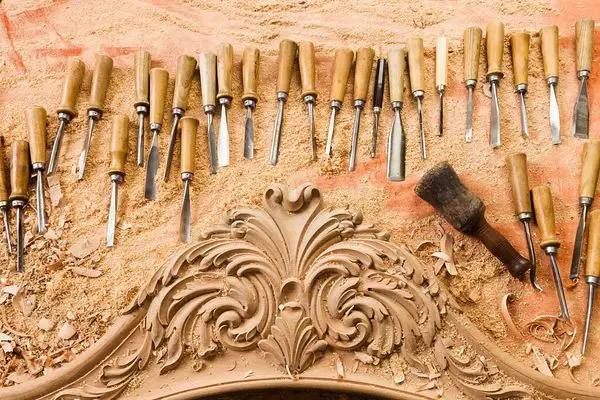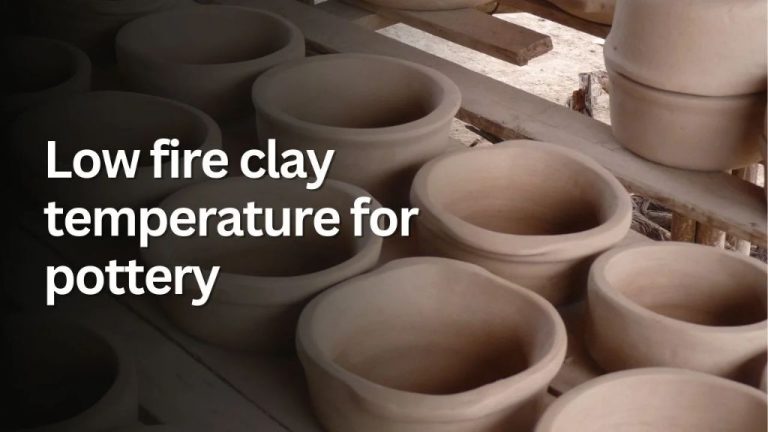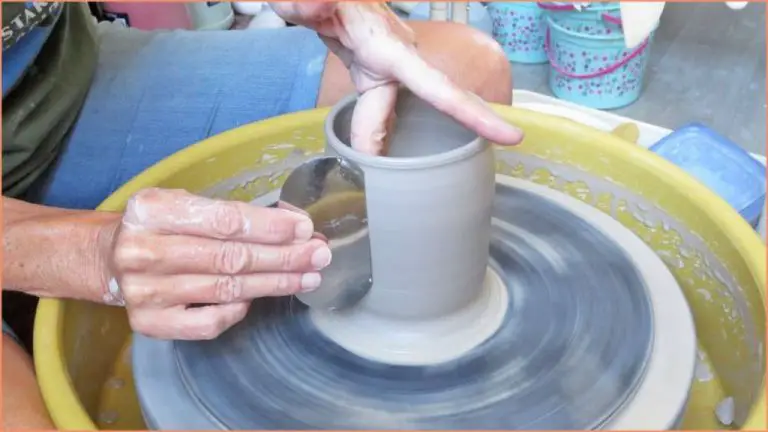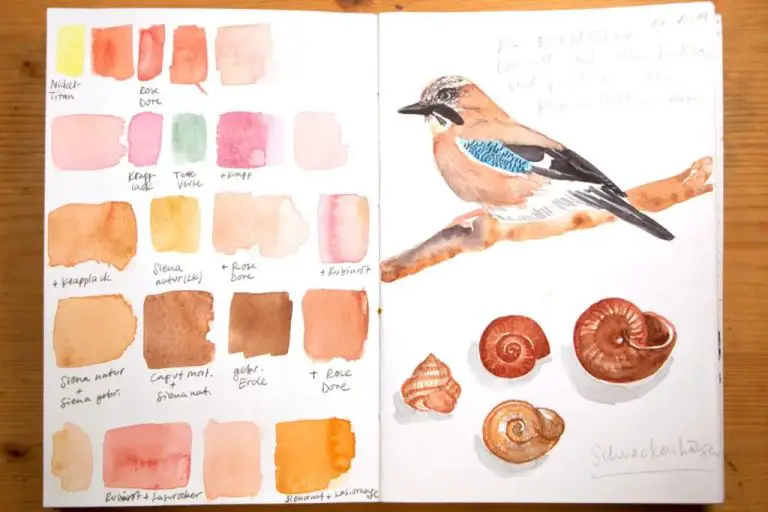Which Mud Is Used For Lippan Art?
What is Lippan Art?
Lippan is a traditional folk art form that originated in the Kutch region of the western Indian state of Gujarat. The word “lippan” comes from the Gujarati word lipan meaning “mud plaster”.
Lippan art involves creating intricate designs and patterns on the walls and floors of village homes using locally available mud, clay, mangrove gum, and other natural materials. The practice dates back to the Indus Valley Civilization era over 4,000 years ago.
This ancient decorative mud and mirror craft holds great cultural significance for the local Kutchi people. Lippan designs are rooted in spirituality and made to bring good luck, prosperity, happiness, and protection from evil forces. Traditional lippan patterns and motifs often have symbolic meanings and connection to local deities.
Lippan underwent a revival in the late 19th century and today around 3500 artisans in Kutch create stunning works showcasing the unique local art form using ancestral techniques passed down through generations.
Making Lippan
Lippan is a unique form of pottery made using a special natural clay found only in the Bhoga-Bareli Tanda villages of Telangana. This clay has properties that allow it to withstand extremely high temperatures without cracking, making it ideal for pottery. The villagers have perfected the process of collecting and preparing this special mud.
The mud used for lippan is sourced from two main lakes in the region – Chelkur Lake and Padalamadugu Lake. Villagers collect the fine clay sediment from the bottoms and banks of these lakes in the summer months when the water levels are low. This mud is then filtered multiple times to remove pebbles, grass, roots and other impurities.
The filtered clay mud is then kneaded thoroughly and left to soak in water for several days. This allows any remaining impurities to rise to the surface, which can then be skimmed off. The fully purified and homogenized mud is now ready to be used for crafting the distinctive lippan pottery.
Applying the Mud
Applying the mud to create lippan art is a delicate process that requires special techniques. The lippan clay needs to be applied smoothly and evenly across the surface. There are a few key techniques lippan artists use:
- Using a flat trowel or spackle to spread the mud – This allows for an even application and smooth surface.
- Patting the mud into shape – The artists pat and flatten the mud with their hands to get the desired shapes and thicknesses.
- Smoothing the edges – They use their fingers, small thin tools, or a wet cloth to refine the edges and blend the mud.
The main tools used are:
- Trowels – For scooping and spreading the mud.
- Spatulas – To flatten and smooth the mud.
- Wooden tools – Small sticks help create lines and details.
- Wet cloth – Dampens the surface to refine the mud.
Having the right mud consistency and using the proper techniques allows the artists to build up intricate relief designs in the clay. It takes great skill and practice to master the mud application process.
Creating the Designs
Lippan art is characterized by its intricate and beautiful designs. The mud is applied to the pottery in layers, and artists use sticks, feathers, and other tools to etch complex patterns and shapes into the wet mud. Some of the most common motifs in Lippan art include:
Geometric shapes: Circles, squares, triangles and diamonds arranged in orderly rows or offset patterns.
Stylized florals: Flowers, leaves, vines and trees rendered in an abstract, geometric style.
Animals: Birds, horses, elephants, peacocks and other animals depicted in profile or abstract form.
Human figures: Stylized representations of people shown in various poses such as dancing, hunting or farming.
The designs often have deep cultural significance beyond their aesthetic appeal. Circles and spirals may symbolize the cycle of life, while images of nature represent the local wildlife and environment. Figures engaged in traditional occupations illustrate the history of the community. Therefore, the patterns not only beautify the pottery, but also preserve the identity and heritage of Lippan artists.
Firing the Lippan
Once the mud has dried on the pots, the next step is firing them to harden and preserve the artwork. Firing Lippan involves multiple stages over the course of several days:
First, the pots are placed upside down in the kiln, with pieces of dried cow dung in between each pot to separate them. The kilns are wood fired, reaching a maximum temperature of around 700-800°C. Firing starts with a low temperature for 8-10 hours to fully dry and harden the pots.
Then the temperature is increased steadily over the next 12-18 hours up to the peak temperature. This stage vitrifies the silica in the clay, fusing it into a glassy material that makes the pottery watertight. The pots must be heated slowly and evenly to prevent cracking from thermal shock.
After reaching peak temperature, the pots are allowed to cool gradually over 10-12 hours before removing them from the kiln. This annealing process relieves internal stresses in the clay and prevents later cracking or shattering. The end result is a shiny, durable finished Lippan pot or artwork.
Notable Lippan Artists
Lippan art has been practiced for centuries in the Kutch region of Gujarat, India by skilled artisans. Over the years, certain lippan artists have risen to prominence for their mastery of the craft. Here are some of the most notable lippan artists that have helped keep this tradition alive:
Ramji Vishwanath – Hailing from the village of Nirona, Ramji Vishwanath (1935-2020) was a pioneering lippan artist. He helped revive interest in the artform in the 1970s and 80s through his unique contemporary designs. Ramji experimented with abstract motifs and new colors, bringing innovation to traditional lippan. His work has been exhibited globally.
Prakashbhai Parmar – Based in Ajrakhpur village, Prakashbhai is one of the few lippan artists still actively practicing the artform. His precise, intricate lippan designs incorporate traditional motifs like flowers, peacocks, and geometric patterns. He employs an ancient traditional technique using a tamarind twig brush. Prakashbhai has trained many students in lippan art.
Fatmaben Khavda – A rare female lippan artisan, Fatmaben creates beautiful, colorful lippans featuring floral and bird motifs. She learned the artform from her father-in-law. Fatmaben has passed on her skills to many in her family and community, empowering more women to embrace this craft. She was awarded a national award for her contributions to lippan.
Hirjibhai Kumbhar – From Ajrakhpur village, Hirjibhai comes from a long lineage of Kutchi potters. He translates his pottery designs onto lippan artwork, creating distinctive pieces. Hirjibhai has exhibited his lippan paintings widely and also conducts workshops to teach the rare artform. His imaginative designs incorporate calligraphy, architectural motifs, and Islamic influences.
Geographical Indication Status
In 2013, the Government of India granted Geographical Indication (GI) status to Lippan artwork from Gujarat. This recognized Lippan as having cultural and artistic origins unique to the Kutch district of Gujarat.
The GI status was granted to protect the distinctive style and heritage of this traditional Indian folk art. It aims to promote Kutchi Lippan artists and prevent imitations from non-Kutch regions. By designating authentic Lippan as GI-certified, it establishes legal protections and standards for this art form.
GI status was pursued to preserve the cultural legacy of Lippan art from Kutch. This traditional mud and mirror craft was under threat as cheaper imitations emerged. GI status ensures authentic Lippan is certified and promotes business for artisans in Kutch. It has helped Lippan gain global recognition.
Decline of Lippan
Lippan art has faced many challenges in recent decades that have contributed to its decline. As modernization has spread across India, the demand for traditional mud and clay wares has diminished. Plastic and metal alternatives are now more widely available and affordable. With lippan’s utility declining, there are fewer artisans practicing the craft today.
In addition, lippan production is very labor intensive. It can take weeks or even months to create a single lippan mural. Young people are less interested in learning this difficult traditional art form when there are other more lucrative career options available. Some lippan styles require building large outdoor kilns, gathering firewood, and maintaining multi-day fires to properly cure the pottery. This deters younger generations from continuing the craft.
Migration of communities has also impacted the passing down of lippan knowledge. As people move away from ancestral villages for education and jobs, fewer remain to learn from aging master lippan artists. The personal apprenticeship model of training is fading. Finally, modernization has brought alternative wall decor options like paint, wallpaper, and mass produced tiles. With more choices available today, lippan appears old-fashioned to some. These factors combined have precipitated a decline in both lippan practitioners and demand.
Efforts to Preserve Lippan
Lippan art was in danger of disappearing as modernization made traditional mud and fire techniques seem obsolete. However, efforts have been made to safeguard and promote this unique artform. Some key initiatives include:
Government Recognition: In 2005, the Karnataka state government applied for Geographical Indication (GI) status for Lippan work. This status was awarded in 2008, recognizing lippan as a traditional artform originating from the Kumta, Sirsi, and Siddapura regions of Karnataka.
Revival Workshops: Local artists have conducted lippan workshops to pass their skills and knowledge to younger generations. Workshops teach traditional techniques and aim to inspire new practitioners to keep the art alive.
Museum Exhibitions: Lippan works have been prominently displayed in folk art museums across India. Exhibiting lippan raises awareness of this little-known art and encourages preservation efforts.
Online Documentation: Websites, social media groups, and digital archives are bringing lippan to the attention of worldwide audiences. Increased visibility builds appreciation for lippan as an artform worth sustaining.
Thanks to these kinds of initiatives, lippan stands a chance of surviving into the future even as lifestyles and technologies change in the region where it originated.
The Future of Lippan
Lippan art faces challenges in being passed on to new generations, but there are efforts underway to ensure this traditional artform survives. Some ways lippan may evolve and continue into the future include:
– Incorporating modern designs and contemporary styles to appeal to younger artists. While retaining the core techniques, lippan can showcase new patterns, colors, and shapes.
– Educational programs to teach lippan in schools and art centers. Hands-on learning engages students to become the next generation of lippan artists.
– Collaborations with interior designers and architects to use lippan tiles in modern buildings. This creates new demand and exposure for lippan art.
– Online tutorials and digital media that make lippan more accessible. Videos and digital tools can reach a wider audience beyond the core lippan region.
– Government grants and cultural programs to promote and safeguard lippan as an important heritage craft. This support ensures lippan continues being practiced and passed down.
With targeted efforts and evolution, the future looks bright for this unique earthenware art to persist as a living tradition.





